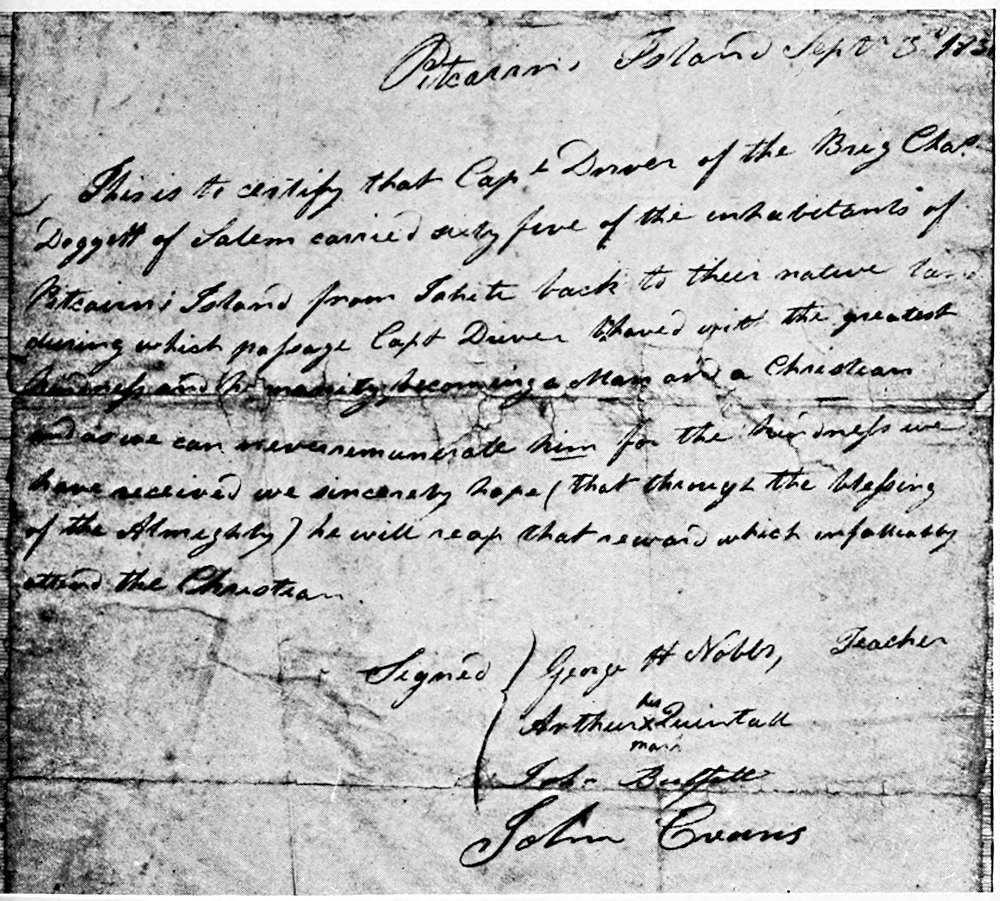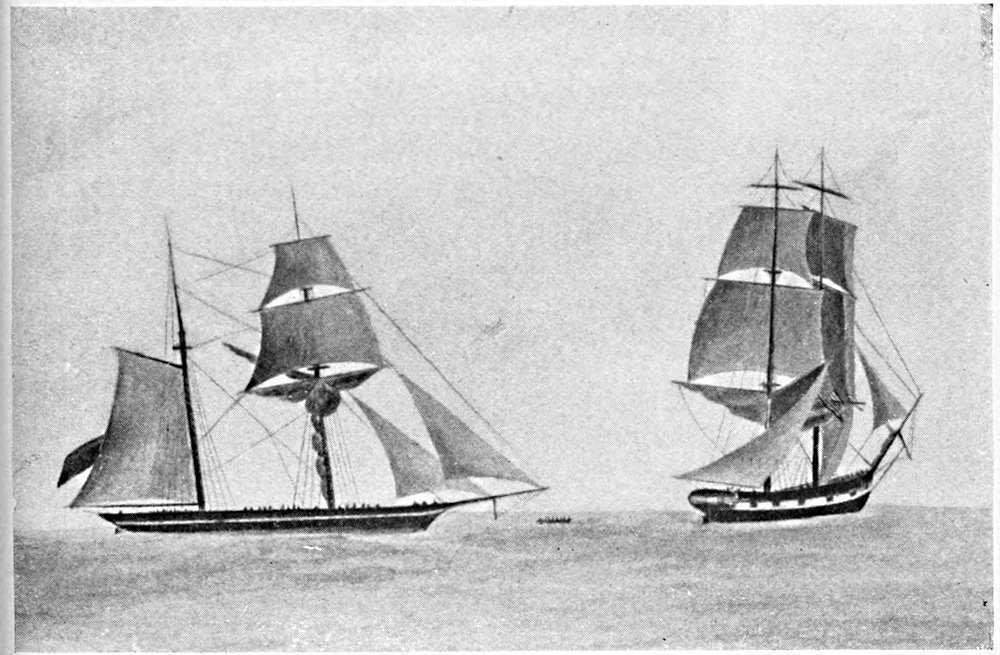International Management: Culture, Strategy, and Behavior 9th Edition, (Ebook PDF)
https://ebookmass.com/product/internationalmanagement-culture-strategy-and-behavior-9thedition-ebook-pdf/
Download more ebook from https://ebookmass.com
More products digital (pdf, epub, mobi) instant download maybe you interests ...
International Management: Culture Strategy and Behavior, 12e ISE 12th/ISE Edition Fred Luthans
https://ebookmass.com/product/international-management-culturestrategy-and-behavior-12e-ise-12th-ise-edition-fred-luthans/
International Financial Management, 9th Edition Eun
https://ebookmass.com/product/international-financialmanagement-9th-edition-eun/
International Marketing Strategy: Analysis, Development and Implementation 9th Edition Robin Lowe
https://ebookmass.com/product/international-marketing-strategyanalysis-development-and-implementation-9th-edition-robin-lowe/ (eTextbook PDF) for Consumer Behavior: Building Marketing Strategy 14th Edition
https://ebookmass.com/product/etextbook-pdf-for-consumerbehavior-building-marketing-strategy-14th-edition/
Police Administration: Structures, Processes, and Behavior 9th Edition, (Ebook PDF)
https://ebookmass.com/product/police-administration-structuresprocesses-and-behavior-9th-edition-ebook-pdf/
Organizational Behavior and Management 10th Edition
https://ebookmass.com/product/organizational-behavior-andmanagement-10th-edition/
(eTextbook PDF) for Behavior Management Principlesand Practices of Positive Behavior Supports 3rd Edition
https://ebookmass.com/product/etextbook-pdf-for-behaviormanagement-principlesand-practices-of-positive-behaviorsupports-3rd-edition/
International Organizational Behavior: Transcending Borders and Cultures 2nd Edition – Ebook PDF Version
https://ebookmass.com/product/international-organizationalbehavior-transcending-borders-and-cultures-2nd-edition-ebook-pdfversion/
International Management: Managing Across Borders And Cultures, Text And Cases 9th Edition Helen Deresky
https://ebookmass.com/product/international-management-managingacross-borders-and-cultures-text-and-cases-9th-edition-helenderesky/
the completely updated Instructor’s Manual, where we also provide some multiple-choice and true-false questions that draw directly from the chapters’ World of International Management topic matter for instructors who want to include this material in their tests.
The use and application of cases is further enhanced in this edition. All cases have been updated and several new ones have been added. The short within-chapter country case illustrations—“In the International Spotlight”—can be read and discussed in class. These have all been revised and two have been added—Turkey and Indonesia. The revised or newly added “Integrative Cases” positioned at the end of each main part of the text were created exclusively for this edition and provide opportunities for reading and analysis outside of class. Review questions provided for each case are intended to facilitate lively and productive written analysis or in-class discussion. Our “Brief Integrative Cases” typically explore a specific situation or challenge facing an individual or team. Our longer and more detailed “In-Depth Integrative Cases” provide a broader discussion of the challenges facing a company. These two formats allow maximum flexibility so that instructors can use the cases in a tailored and customized fashion. Accompanying many of the in-depth cases are short exercises that can be used in class to reinforce both the substantive topic and students’ skills in negotiation, presentation, and analysis. The cases have been extensively updated and several are new to this edition. Cases concerning the global AIDS epidemic, Dansko, Russell Athletics/Fruit of the Loom, Euro Disneyland and Disney Asia, Google in China, IKEA, HSBC, Nike, Walmart, Tata, AirAsia, Sony, Danone, Chiquita, Coca-Cola, and others are unique to this book and specific to this edition. Of course, instructors also have access to Create (www.mcgraw-hillcreate.com), McGraw-Hill’s extensive content database, which includes thousands of cases from major sources such as Harvard Business School, Ivey, Darden, and NACRA case databases.
Along with the new or updated “International Management in Action” boxed application examples within each chapter and other pedagogical features at the end of each chapter (i.e., “Key Terms,” “Review and Discussion Questions,” “The World of International Management—Revisited,” and “Internet Exercise”), the end-of-part brief and indepth cases and the end-of-book skill-building exercises and simulations on the Online Learning Center complete the package.
To help instructors teach international management, this text is accompanied by a revised and expanded Instructor’s Resource Manual, Test Bank, and PowerPoint Slides, all of which are available password protected on the Online Learning Center at www. mhhe.com/luthans9e.
Another important innovation is carried over and updated from the 8th edition: we have provided instructors with a guide to online publicly available videos, many available on YouTube, that link directly to chapter themes. These short clips give instructors an opportunity to use online visual media in conjunction with traditional lecture, discussion, and PowerPoint presentations. Our guide includes the name, short description, and link for the videos, which we will keep updated on the book website.
International Management is generally recognized to be the first “mainstream” text of its kind. Strategy casebooks and specialized books in organizational behavior, human resources, and, of course, international business, finance, marketing, and economics preceded it, but there were no international management texts before this one, and it remains the market leader. We have had sustainability because of the effort and care put into the revisions. We hope you agree that this ninth edition continues the tradition and remains the “world-class” text for the study of international management.
Acknowledgments
We would like to acknowledge those who have helped to make this book a reality. We will never forget the legacy of international management education in general and for this text in particular provided by our departed colleague Richard M. Hodgetts. Special thanks also go to our growing number of colleagues throughout the world who have given us many ideas and inspired us to think internationally. Closer to home, Fred Luthans would
like to give special recognition to two international management scholars: Henry H. Albers, former Chair of the Management Department at the University of Nebraska and former Dean at the University of Petroleum and Minerals, Saudi Arabia, to whom previous editions of this book were dedicated; and Sang M. Lee, former Chair of the Management Department at Nebraska, founding and current President of the Pan Pacific Business Association, and close colleague on many ventures around the world over the past 30 years. Jonathan Doh would like to thank the Villanova School of Business and its leadership, especially Dean Pat Maggitti, Vice Dean Daniel Wright, and Herb Rammrath who generously endowed the Chair in International Business Jonathan now holds. Also, for this new ninth edition we would like to thank Ben Littell, who did much of the research and drafting of the chapter opening World of International Management features and provided extensive research assistance for other revisions to the book.
In addition, we would like to acknowledge the help that we received from the many reviewers from around the globe, whose feedback guided us in preparing the ninth edition of the text. These include:
Thomas M. Abbott, Post University
David Elloy, Gonzaga University
James Gran, Buena Vista University
Julie Huang, Rio Hondo College
Jae C. Jung, University of Missouri–Kansas City
Emeric Solymossy, Western Illinois University.
Our thanks, too, to the reviewers of previous editions of the text:
Yohannan T. Abraham, Southwest Missouri
State University
Janet S. Adams, Kennesaw State University
Irfan Ahmed, Sam Houston State University
Chi Anyansi-Archibong, North Carolina
A&T State University
Kibok Baik, James Madison University
R. B. Barton, Murray State University
Lawrence A. Beer, Arizona State University
Koren Borges, University of North Florida
Tope A. Bello, East Carolina University
Mauritz Blonder, Hofstra University
Gunther S. Boroschek, University of Massachusetts–Boston
Charles M. Byles, Virginia Commonwealth University
Constance Campbell, Georgia Southern University
Scott Kenneth Campbell, Georgia College & State University
M. Suzanne Clinton, University of Central Oklahoma
Helen Deresky, SUNY Plattsburgh
Dr. Dharma deSilva, Center for International Business Advancement (CIBA)
Val Finnigan, Leeds Metropolitan University
David M. Flynn, Hofstra University
Jan Flynn, Georgia College and State University
Joseph Richard Goldman, University of Minnesota
Robert T. Green, University of Texas at Austin
Annette Gunter, University of Central Oklahoma
Jerry Haar, Florida International University–Miami
Jean M. Hanebury, Salisbury State University
Richard C. Hoffman, Salisbury State University
Johan Hough, University of South Africa
Steve Jenner, California State University–Dominguez Hills
James P. Johnson, Rollins College
Marjorie Jones, Nova Southeastern University
Ann Langlois, Palm Beach Atlantic University
Curtis Matherne III, East Tennessee State University
Alan N. Miller, University of Nevada, Las Vegas
Mohd Nazari Ismail, University of Malaya
Robert Kuhne, Hofstra University
Christine Lentz, Rider University
Ben Lever III, College of Charleston
Robert C. Maddox, University of Tennessee
Douglas M. McCabe, Georgetown University
Jeanne M. McNett, Assumption College
Lauryn Migenes, University of Central Florida
Ray Montagno, Ball State University
Rebecca J. Morris, University of Nebraska–Omaha
Ernst W. Neuland, University of Pretoria
William Newburry, Rutgers Business School
Yongsun Paik, Loyola Marymount University
Valerie S. Perotti, Rochester Institute of Technology
Richard B. Peterson, University of Washington
Suzanne J. Peterson, University of Nebraska–Lincoln
Joseph A. Petrick, Wright State University
Juan F. Ramirez, Nova Southeastern University
Richard David Ramsey, Southeastern Louisiana University
Mansour Sharif-Zadeh, California State Polytechnic University–Pomona
Owen Sevier, University of Central Oklahoma
Jane H. Standford, Texas A&M University–Kingsville
Dale V. Steinmann, San Francisco State University
Randall Stross, San Jose State University
George Sutija, Florida International University
Deanna Teel, Houston Community College
David Turnipseed, University of South Alabama–Mobile
Katheryn H. Ward, Chicago State University
Li Weixing, University of Nebraska–Lincoln
Aimee Wheaton, Regis College
Timothy Wilkinson, University of Akron
Marion M. White, James Madison University
George Yacus, Old Dominion University
Corinne Young, University of Tampa
Zhe Zhang, University of Central Florida–Orlando
Anatoly Zhuplev, Loyola Marymount University
Finally, thanks to the team at McGraw-Hill who worked on this book: Paul Ducham, Managing Director; Anke Weekes, Senior Brand Manager; Kelly Delso, Senior Developmental Editor; Lori Bradshaw, Managing Developmental Editor; Michael Gedatus, Marketing Manager; and Jessica Portz, Project Manager. Last but by no means least, we greatly appreciate the love and support provided by our families.
Fred Luthans and Jonathan P. Doh
x
About the Authors
FRED LUTHANS is University and the George Holmes Distinguished Professor of Management at the University of Nebraska–Lincoln. He is also Chair of the Master Research Council for HUMANeX, Inc. He received his BA, MBA, and PhD from the University of Iowa, where he received the Distinguished Alumni Award in 2002. While serving as an officer in the U.S. Army from 1965–1967, he taught leadership at the U.S. Military Academy at West Point. He has been a visiting scholar at a number of colleges and universities and has lectured in most European and Pacific Rim countries. He has taught international management as a visiting faculty member at the universities of Bangkok, Hawaii, Henley in England, Norwegian Management School, Monash in Australia, Macau, Chemnitz in the former East Germany, and Tirana in Albania. A past president of the Academy of Management, in 1997 he received the Academy’s Distinguished Educator Award. In 2000 he became an inaugural member of the Academy’s Hall of Fame for being one of the “Top Five” all-time published authors in the prestigious Academy journals. Currently, he is coeditor-in-chief of the Journal of World Business, editor of Organizational Dynamics, coeditor of Journal of Leadership and Organization Studies, and the author of numerous books. His book Organizational Behavior (Irwin/McGraw-Hill) is now in its 12th edition and the groundbreaking book Psychological Capital (Oxford University Press) with Carolyn Youssef and Bruce Avolio will be out in its second edition in 2014. He is one of very few management scholars who is a Fellow of the Academy of Management, the Decision Sciences Institute, and the Pan Pacific Business Association, and he has been a member of the Executive Committee for the Pan Pacific Conference since its beginning 30 years ago. This committee helps to organize the annual meeting held in Pacific Rim countries. He has been involved with some of the first empirical studies on motivation and behavioral management techniques and the analysis of managerial activities in Russia; these articles have been published in the Academy of Management Journal, Journal of International Business Studies, Journal of World Business, and European Management Journal. Since the very beginning of the transition to market economies after the fall of communism in Eastern Europe, he has been actively involved in management education programs sponsored by the U.S. Agency for International Development in Albania and Macedonia, and in U.S. Information Agency programs involving the Central Asian countries of Kazakhstan, Kyrgyzstan, and Tajikistan. For example, Professor Luthans’ recent international research involves his construct of positive psychological capital (PsyCap). He and colleagues have published their research demonstrating the impact of Chinese workers’ PsyCap on their performance in the International Journal of Human Resource Management and Management and Organization Review. He is applying his positive approach to positive organizational behavior (POB), PsyCap, and authentic leadership to effective global management and has recently been the keynote at programs in China (several times), Malaysia, Korea, Indonesia, England, Norway, Finland, South Africa, and soon Italy.
JONATHAN P. DOH is the Herbert G. Rammrath Chair in International Business, founding Director of the Center for Global Leadership, and Professor of Management at the Villanova School of Business. Jonathan teaches, does research, and serves as an executive instructor and consultant in the areas of international strategy and corporate responsibility and serves as an occasional executive educator for the Aresty Institute of Executive Education at the Wharton Business School. Previously, he was on the faculty of American and Georgetown Universities and a senior trade official with the U.S. government. Jonathan is author or co-author of more than 75 refereed articles published in the top international


business and management journals, 30 chapters in scholarly edited volumes, and more than 75 conference papers. Recent articles have appeared in journals such as Academy of Management Review, California Management Review, Journal of International Business Studies, Journal of World Business, Organization Science, Sloan Management Review, and Strategic Management Journal He is co-editor and contributing author of Globalization and NGOs (Praeger, 2003) and Handbook on Responsible Leadership and Governance in Global Business (Elgar, 2005) and co-author of the previous edition of International Management: Culture, Strategy, and Behavior (8th ed., McGraw-Hill/Irwin, 2012), the best-selling international management text. His current research focus is on strategy for emerging markets, global corporate responsibility, and offshore outsourcing of services. His most recent scholarly books are Multinationals and Development (with Alan Rugman, Yale University Press, 2008), NGOs and Corporations: Conflict and Collaboration (with Michael Yaziji, Cambridge University Press, 2009) and Aligning for Advantage: Competitive Strategy for the Social and Political Arenas (with Tom Lawton and Tazeeb Rajwani, Oxford University Press, 2014). He is co-Editor-in-Chief of MRN International Environment of Global Business (SSRN Journal), Senior Editor of Journal of World Business, Associate Editor of Business & Society, and Consulting Editor of Long Range Planning. Beginning in January of 2015 he will assume the position of Editor-in-Chief of Journal of World Business. Jonathan has also developed more than a dozen original cases and simulations published in books, journals, and case databases and used at many leading global universities. He has been a consultant or executive instructor for ABB, Anglo American, Bodycote, Bosch, China Minsheng Bank, Hana Financial, HSBC, Ingersoll Rand, Medtronic, Shanghai Municipal Government, Siam Cement, the World Economic Forum, and Deloitte Touche, where he served as senior external adviser to the Global Energy Resource Group. Jonathan is part of the Executive Committee of the Academy of Management Organizations and Natural Environment Division with increasing responsibilities culminating in the chair of the division in 2016. He was ranked among the top 15 most prolific international business scholars in the world for the period 2001–2009 (Lahiri and Kumar, 2012). He holds a PhD in strategic and international management from George Washington University.
In-Depth
Case 1.1: Student Advocacy and “Sweatshop” Labor: The Case of
Brief Integrative Case 3.2: Can Sony Regain Its Innovative Edge? The OLED Project 397
In-Depth Integrative Case 3.1: Tata “Nano”: The People’s Car 402
In-Depth Integrative Case 3.2: The Ascendance of AirAsia: Building a Successful Budget Airline in Asia 411
5
TheNatureofCulture112 CulturalDiversity113
ValuesinCulture117
ValueDifferencesandSimilaritiesacrossCultures117 ValuesinTransition118 CulturalDimensions120 Hofstede120 Trompenaars127
IntegratingCultureandManagement:TheGLOBEProject136 CultureandManagement137
GLOBE’sCulturalDimensions138 GLOBECountryAnalysis138
6
TheWorldof International Management: Applev.Samsung: ComparingCorporateCulture146
TheStrategyforManagingacrossCultures148 StrategicPredispositions149 MeetingtheChallenge150 Cross-CulturalDifferencesandSimilarities153 ParochialismandSimplification153 SimilaritiesacrossCultures156 ManyDifferencesacrossCultures156 CulturalDifferencesinSelectedCountriesandRegions160 DoingBusinessinChina161 DoingBusinessinRussia163 DoingBusinessinIndia165 DoingBusinessinFrance166 DoingBusinessinBrazil167 DoingBusinessinArabCountries168
TheWorldof International Management: Managing CultureandDiversityinGlobalTeams174
Another random document with no related content on Scribd:
Letter to Captain Driver from the “Bounty” Colonists after he had carried them from Tahiti back to Pitcairn Island. (See foot note on page 538.)
A little later in the voyage the Glide hit a reef and her captain decided that she must be hove down and repaired. How small these old-time vessels were is shown in this process of heaving them down, or careening on some sandy beach when their hulls needed cleaning or repairs. In the Peabody Museum of Salem there is a painting done by one of the crew, of the Salem brig Eunice which
was hauled ashore on a South Sea island. After stripping, emptying her and caulking her seams, the crew discovered that it was a task beyond their strength to launch her again. What did they do but assemble all the spare timber, cut down trees and hew planks, and after incredible exertion build a huge cask around the brig’s dismantled hull. It was more of a cylinder than a cask, however, from which the bow and stern of the craft extended. Lines were passed to her boats and the windlass called into action as she lay at anchor close to the beach.
Then with hawsers rigged around the great cask, every possible purchase was obtained, and slowly the brig began to roll over and over toward the sea, exactly as a barrel is rolled down the skids into a warehouse. In this unique and amazing fashion the stout Eunice was trundled into deep water. As soon as she was afloat, the planking which encased her was stripped off and she was found to be uninjured. Then her masts were stepped and rigged, her ballast, stores and cargo put aboard, and she sailed away for Salem. The painting of this ingenious incident tells the story more convincingly than the description.
The account of the heaving down of the Glideis not so unusual as this but it throws an interesting light upon the problems of these resourceful mariners of other days. “To heave down the ship was an undertaking requiring great caution and ability,” the journal relates. “A large ship to be entirely dismantled; a large part of her cargo to be conveyed ashore; a floating stage of spars and loose timbers constructed alongside; ourselves surrounded by cannibals, scores of which were continually about the vessel and looking as if they meditated mischief. It was well for the Glide that her captain not only knew the ropes but had been a ship carpenter and could use an axe. He had not, like many masters of vessels nowadays, climbed up to the captain’s berth through the cabin window. He was fully equal to this emergency.”
The ship, having been hove down without mishap, was made ready for opening a trade in beche-de-mer, a species of sea slug,
which was dried and carried to China as a delicacy in high repute among the people of that country. A safe anchorage was found, and the king of the nearest tribe “made pliable” by numerous gifts after which a contract was made with him for gathering the cargo. He assembled his people and set them at work erecting on the beach the row of buildings needed for storing and curing the sea slugs.
When this was done the warriors of nearby friendly tribes began to appear in canoes, bringing their wives and children. They built huts along the beach until an uproarious village had sprung up. Its people bartered tortoise shell, hogs and vegetables for iron tools, and whales’ teeth, and helped gather beche-de-mer in the shallow water along the reefs. Two of the ship’s officers and perhaps a dozen of the crew lived ashore for the purpose of curing the cargo. Their plant was rather imposing, consisting of a “Batter House,” a hundred feet long by thirty wide in which the fish was spread and smoked; the “Trade House” in which were stored muskets, pistols, cutlasses, cloth, iron-ware, beads, etc., and the “Pot House” which contained the great kettles used for boiling the unsavory mess. In putting up these buildings the king would make a hundred of his islanders toil a week on end for a musket and he kept the musket.
“The business aboard, the din of industry ashore, the coming and going of boats and the plying of hundreds of canoes to and from the sea reef, gave much animation to things,” writes the chronicler of this voyage of the Glide.
“Indeed I could not but regard the scene, among islands so little known to the world, as highly creditable to the commercial enterprise of the merchants engaged in the trade. Where next, thought I, will Salem vessels sail? North or south, around Good Hope or the Horn, we find them, officered and manned by Salem men. The Glide’s company were thirty men, most of whom were young, strong and active, a force sufficient with our muskets, pistols, cutlasses, etc., to resist any attack from the natives. Though without a profusion of ornamental work, the Glidewas a beautiful model, as strong as oak and ship carpenters could make her. At anchor in the
harbor of Miambooa, she had a warlike appearance. Heavy cannon loaded with a cannister and grape shot projected from the port holes on each side. In each top was a chest of arms and ammunition. On deck and below, weapons of defense were so arranged as to be available at short notice. Boarding nettings eight or ten feet high were triced up around the ship by tackles, and whipping lines suspended from the ends of the lower yardarms.”
Before the journal deals with the tragedy and loss of the Glide, the author jots down such bits of information as this:
“One of the most powerful chiefs on this island (Overlau) at the time of our visiting it, was Mr. David Whepley, an American, and, I believe, a native of New Bedford, whence he had sailed some years before in a whale ship. For some cause, on the arrival of the vessel here, he took sudden leave and ultimately became distinguished among the natives. He was a young man apparently about thirty years of age.”
The career of a trader in the South Seas three-quarters of a century ago was enlivened by incidents like the following:
“When passing within a few miles of Pennrhyn’s Island, we noticed some canoes filled with savages coming off to the ship. Wishing to procure some grass for our live-stock, we hove to and awaited their approach. Their numbers and strength made it prudent to put ourselves in a defensive position; each man was armed and our cannon, loaded with grape-shot, were run out at the port holes.
“Presently there were alongside fifty or sixty of the most repulsive monsters that I ever beheld; very tall, of complexion unmixed black, with coarse stiff hair like dog’s bristles, and their language, if such it was, more resembling dogs barking than articulate speech. Their whole aspect was truly terrific. They were not permitted to come on board, but only to clamber up the sides of the vessel. The ship’s channels fore and aft on both sides were filled with them. The Glide’scompany was armed, yet our situation was very perilous.
“Whilst Captain Archer was selecting some articles of trade, a spear was hurled at him by a savage standing in the larboard mizzen channels. I stood within four or five feet of the captain, and saw the savage, but his movement was so quick that I could not in season give the alarm. The captain was leaning over the larboard hencoop, his back was toward the savage, and but for a providential turning of his head, the spear would have pierced his neck. As it was, it grazed his neck and inflicted a slight wound.
“This seemed to be a signal for attack; the savages became exceedingly clamorous. The captain commanded ‘Fire.’ It was a fearful order and fearfully obeyed. Five or six savages, among them the one who had hurled the spear, were shot and fell back with a death shriek into the sea. Others were severely wounded by our boarding pikes, and cutlasses. Two or three of the crew were slightly injured in keeping the natives from the deck. Had the captain’s orders been a moment delayed, the savages must have gained the better of us. As soon as the captain’s order had been given I let go the weather main-brace. A six knot breeze was blowing and the yards having been quickly rounded, the motion was soon sufficient to embarrass the savages, and we were enabled to drive them from the ship.
“As the Glide moved on, we left them astern in the utmost confusion. Their situation was truly pitiable. The sun had set; there was a heavy sea, and the wind was freshening. They were five miles from their island. Some were swimming about hither and thither to recover their canoes which had been upset by the ship’s progress; some went soon to the bottom, and others who had gained their canoes sat hideously bemoaning the desolation around them. Their eyes rolled wildly as they hurled their spears toward the ship, and they howled and gnashed their teeth like so many fiends of darkness. We passed within a mile of the island, and observed numerous fires kindled along the shore, probably as beacons to guide back the natives who had attacked us.”
Captain Archer’s ship filled her hold with beche-de-mer and took it to Manila, returning to the Fijis for a second cargo. Arriving once more at the island of Overlau, the first and third officers with part of the crew were sent in a boat to Lakamba, an island twenty-five miles distant to conduct the traffic in beche-de-mer. Because of shoal water the ship could not follow them and she carried on a trade at her anchorage in tortoise shell and sandal wood. “Knowing that on the completion of our second cargo,” reads the journal, “we were to leave the Fijis, the party at Lakamba worked with zeal. The men aboard ship were no less industrious. The armorer and his mate manufactured knives, chisels, and other cutlery for exchange. The carpenter was busy at his bench. Above some were repairing the rigging; on deck others were mending sails, and making matting bags to pack beche-de-mer. The sun shone not on a more faithful crew. The captain traded with the natives when they came alongside, and directed all matters aboard. Thus prosperously passed several weeks.
“We were frequently visited by David Whepley, the American chieftain at Overlau; sometimes accompanied by two or three of his warriors. He was usually dressed as a sailor and had with him a loaded rifle whose good qualities were the main topic of his conversation. He also told us much concerning his singular life, and his adopted people, over whom he seemed to have great influence owing to his superior wisdom, and the good terms existing between him and the powerful king of Bou. The king of Bou sometimes visited us. When this old chief, whose complexion was darkness visible out of which peered two deep-set glaring eyeballs with a grizzly beard tapering to a point a foot below his chin, came alongside in his large double canoe, the spectacle was impressive. This canoe was of curious and imposing structure, able to hold a hundred or more persons, with a triangular matting sail as large as the Glide’s maintopsail. He was accompanied by forty or fifty vigorous black warriors, huge but symmetrical in build, with elegant white turbans on their heads, and ornaments hanging from their
ears. They were girt with some white tapas, and held massive clubs and spears which they use with terrible effect.
“One morning about forty of the savages of Overlau brought some fruit off the ship, ostensibly for trade. Only two or three of them were allowed to come on board at a time. Nine or ten of the crew were variously occupied in different parts of the ship. The armorer and myself were at work together on the forecastle. In a short time our suspicions were excited by seeing our visitors engaged in close conversation among themselves, and counting the men, ‘Rua, Tolo, Va, Leema, Ono, Vetu,’ etc. (one, two, three, four, five, six, seven, etc.). The armorer was going aft to inform the captain of the circumstances when our second officer, on looking over the ship’s side, saw some savages busily passing up weapons to others standing in the channels. The men aloft, having also perceived this manoeuvre, hurried down on deck and discharged a volley of musketry over the heads of the visitors which dispersed them. Some leaped into the sea, others into their canoes, and swam or paddled ashore in great consternation.”
But the company of the Glide were not to escape scot-free from the hostility of the Fijians. A few days after the foregoing incident, the second officer, carpenter, and six of the foremast hands were sent ashore to cut an anchor-stalk of timber. As usual, the boat was well supplied with arms and ammunition. A boy of the party was left in charge of the boat on the beach, and the others went into the nearest woods. Presently a score of natives appeared and tried to trade, but the sailors were too busy to deal with them, whereupon they sauntered off to the beach and began to annoy the lad who had been left behind. Before long they were stealing articles from the boat and the young sentinel raised an alarm.
“The men hearing the cry were making for the boat,” relates the diarist of the Glide, “when the savages in a body rushed towards them. Our sailors, levelling their loaded muskets, retreated backward to the beach, avoiding with great difficulty the clubs and spears hurled at them. Thus all but two reached the boat. One of these as
he came down to the water’s edge, imprudently discharged his musket, and was instantly attacked and overpowered. He succeeded in throwing himself into the water, and after swimming a few strokes was seen to lift his head streaming with blood, and with his hand beckon feebly for the boat which, amidst the excitement, had been shoved off into deep water. He was followed by the savages, again attacked, dragged ashore and slain. The other unfortunate man rushed from the woods, hewing his way with the butt of his musket through the crowd of savages and fell dead on the beach.
“Whilst the crew on board was busily engaged in washing decks, the fearful war-cry of the natives fell upon our ears. David Whepley, who was sitting with some members of his tribe upon the taffrail, cried out, ‘There is trouble with your shipmates ashore.’ Seeing the flash and hearing the report of the musket, I ran aft to give the alarm to Captain Archer who hastened on deck and after scanning the beach with the glass, ordered a boat away in which Whepley himself went.
“Our feeling may be imagined as we went over the ship’s side and watched in silence the first boat making towards us, having on board only six of the eight men who had left the ship. Who had been left behind we knew not, until on a nearer approach one of the crew exclaimed: ‘I do not see Derby or Knight.’[45]
“The lifeless bodies of the two men were found by the second boat’s company lying on the beach stripped of their clothing and dreadfully mangled. They were wrapped in garments, brought on board and laid out upon the quarterdeck. About eleven o’clock of the same day they were committed to the care of David Whepley, who carried them to his end of the island and buried them. Although no funeral services were formally held, yet in the hearts of all that looked upon the dead, and walked the deck in sadness, were solemn thoughts of death and earnest hopes that this severe and unexpected stroke might influence for good our after lives.”
Not long after this tragedy the Glide sailed for the island of Miambooa, which was destined to be the scene of her loss. The
story of the wreck and the experience of the survivors among a tribe of singularly friendly Fijis seems worthy a place in the history of Salem seafarers.
“Every boat load of beche-de-mer that came off from the shore (at Miambooa),” runs the story, “was greeted with joy, for it added something to the cargo which was fast being completed. Friendly relations existed between the natives and ourselves, so that the trade was undisturbed. The ship was in good order and we were almost ready to leave the islands. At evening the officers walked the quarterdeck with lighter step, and the crew, well and happy, assembled upon the forecastle which resounded with their mirth and songs. One of these songs was ‘Home Sweet Home,’ and under a clear starlit sky, enjoying after hard work the grateful ocean breeze, the inspiring chorus of this song burst forth from our hearts, and recalled to memory long past and distant scenes. Our shipmates ashore also caught our pealing chorus as it floated over the still water to their ears and they sent it back to the ship like an echo.
“On March 31, (1831), the sky began to lower, and sudden gusts of wind blowing violently down the high land which eastward overhangs the town of Bonne Rarah, caused the ship to careen and gave token of a coming storm. The signal guns at their usual hour announced ‘all’s well,’ but in the gloomy light the wind increased to hurricane force and after making a gallant fight of it the Glide dragged her anchors and was driven on a reef. The crew got ashore in daylight, but after being twenty-two months absent from port, was wrecked the Glide, one of the stateliest ships that ever sailed from Salem.”
“Among those who left the ship in the same party with me,” wrote our survivor, “was a young man who communicated to me some interesting particulars of his life. His name was William Carey. He had sailed, some years before, from Nantucket in the whale-ship Oreno, which was wrecked near Turtle Island, one of the Fijis. The officers and crew escaped from the wreck, but Carey, noticing a disturbance between his shipmates and the natives, concealed
himself, fearing the issue. He remained in safe seclusion two or three days, not venturing to go out lest he should suffer what he supposed to be and what was, the fate of his companions, and he stealthily crept from his concealment in search of food. He was seen by a native, and, conscious of being discovered, he seated himself on a rock, and turning his back toward the savage, awaited the result in powerless despair. The native approached him, bade him rise and conducted him to the Boore.[46] The natives held an animated conference at which it was decided to spare his life, and he was taken by the chief into his family, and ever afterwards well provided for and kindly treated.
“Several years after the loss of the Oreno, the Salem ship Clay, Captain Vandeford, of Salem, arrived at the same island. Carey’s acquaintance with the language and customs of the natives enabled him to render important services in the way of trade. After the departure of the Clay from the islands Carey shipped on board the brig Quill, Captain Kinsman of Salem. With this vessel he remained until her cargo was completed when he was induced to take a berth in the Glide. Thus was he twice wrecked at the Fijis, and twice subjected to a residence among the savages without meanwhile visiting home.
“In the course of two or three days after the wreck of the Glide, the king permitted a part of the crew with several natives to go off to the ship to get the salt provisions and bread. Fifty or sixty savages were ransacking the wreck in every part, stripping the rigging from the spars, unhinging the cabin doors, hacking timber to extract nails and spikes, beating in barrels and hogsheads, dragging up our chests from the forecastle, jabbering all the while like monkeys yet working with the steady gravity of old caulkers. The sight was painful, yet their eagerness to outdo each other in securing booty was amusing.
“In my chest was a small package of letters valuable to me alone, which I was now, in my misfortune, especially desirous to keep. As I went towards the chest to get them I was repulsed by a savage who
raised his club over my head and bade me begone or he would slay me. ‘Sah-lago, sah-senga,ne-lago, sah-moke.’ I desisted from my purpose, and in a few minutes saw my chest with every token of home in it tumbled over the ship’s side.
“Our beche-de-mer about half filled the hold and by the bilging of the ship, had become a putrid mass. At the foot of the mainmast was a barrel of cast iron axes whose position the natives had somehow learned. Their desire for this tempting prize overcame their reluctance to use the only means of securing it, and down they dove into the loathsome mass at the risk of suffocation, often plunging in vain several times and crawling back on deck covered with slime. One native in diving came in contact with some mortar formed by a cask of lime that was broken by the motion of the ship. Grasping a handful he returned dripping with beche-de-mer and asked what the strange substance was. ‘The white man’s bread,’ answered one of the crew. The native took a large mouthful which well nigh strangled him and spat it out with many wry faces and ludicrous motions amid the loud laughter of his friends.
“Soon after the complete plundering of the ship, a council respecting us was held in the Boore by the king, priests and warriors. It was told me that on the arrival of the first boat’s company at Bonne Rarah, the captain was thus questioned by the king. ‘Should Fijians be cast ashore among your people, how would you treat them?’ ‘Kindly,’ was the reply. ‘Then,’ rejoined the king, ‘I will treat you kindly. Go with your men to the Boore, and I will protect you.’ Nevertheless the consultation caused us many misgivings. The king urged that our services would be very valuable in showing them the use of muskets and in repairing them, in making bullets, etc. One chief thought that we should eat too much, and hence prudently suggested our being dispatched at once. The high priest arose to give his judgment, which was awaited with great interest. This man was very black, of monstrous size, and most unpleasant to look at. He recommended that they make hogs of us, alluding to the practice of killing these animals by blows on the head, cooking and eating them. This advice was consistent with the
reputation of this priest. It was said that on the morning before the wreck of the ship, he stood outside his hut yelling and writhing. The natives declared that he shouted or bewitched the vessel ashore.
“After much discussion the better counsel of the king prevailed. The decision was made known to us all by natives who ran and embraced us crying ‘Sambooloa booloapapalangi.’ (The white men will not be hurt.)
“Soon after the breaking up of the council the king as a reassurance of his favor, returned to us a few of our belongings. His method of distribution showed either his supreme contempt for maritime rank or a great error in valuation, for whilst to the crew generally he gave garments or other things very needful and acceptable, upon Captain Archer he bestowed with the utmost dignity and condescension a wornout chart and a useless fragment of an old flannel shirt. The interest of the king in our welfare constantly showed itself during our three months’ residence at Bonne Rarah. Almost daily he looked in upon us to learn our wants, and kept in his house for our sole use quantities of tea, coffee and tobacco, which he distributed to us as need required. If we met him in our walks about the village the salutations ‘sah-andra, tourongalib,’ (welcome king), ‘sah-andra papalangi,’ (welcome white man), were amicably exchanged. There was withal about him a dignity which well comported with his kingly character, and showed that any violations of loyalty on the part of the natives or of due respect on ours would not go unpunished.
“On the 28th of March, Captain Archer, Carey and two or three of our men sailed in our boat by the king’s consent, to the island of Bou, the capital of the Fijis. This, our first separation, though on many accounts painful, was prudently planned, as a vessel was rumored to be in the vicinity of Bou. After exchanging farewells and cheers of mutual encouragement they started on their perilous adventure of sailing two hundred miles in a small boat, exposed to many dangers, and, not the least, attacks from savages.
“The singular use made of our clothing by the natives was often ludicrous. Some wore our jackets buttoned down behind, others had on our trousers wrong side before; one little fellow strutted along in a ruffled shirt which had belonged to one of the officers, the ruffles flaring on his back. Amongst the booty from the ship were many casks of powder, of whose explosive nature the natives had little knowledge. In one dwelling which we visited were a large number of kegs of powder promiscuously placed on the floor, in the centre of which a fire was kindled. The family was cooking their usual food, loose powder was scattered about, and the proprietor himself, dressed in a sailor’s jacket and with a Scotch cap on his head, sat on a keg of powder before the fire, composedly smoking his pipe. We were somewhat amazed at the sight. Indeed it may be doubted whether Damocles himself (whose famous sword has become much blunted by its frequent use in illustration) had more cause to be ill at ease at his feast than we had while paying our native friend the civilities of the season. Our visit was not protracted and we took leave before the dinner in preparation was ready to be eaten.
“Occasionally we invited the king to share our provisions with us. Whenever he was graciously pleased to accept the invitation he brought with him a chair, plate, knife and fork (which he had obtained from the ship), and after seating himself with becoming dignity, grasped the knife in his left hand at such an angle that as soon as one piece of food entered his mouth two fell back upon his plate. He also used his fork as a toothpick, thus confirming the notion that this practice comports better with the manners of savage than of civilized life.
“An odd volume of Shakespeare saved from the wreck, moved us to get up a dramatic entertainment, the subject of which was the voyage of the Glide. The play began with the captain engaged in shipping a crew at a sailor’s boarding house, and holding forth all those eloquent attractions usually set off by this class of men. Following this scene were various mishaps of the voyage. The king and a crowd of natives were seated before us on mats, and paid wondering attention, at a loss to understand most of our sayings
and doings until in the course of the play, our arrival at the Fijis was pictured. The trafficking and haggling with the natives was mimicked by an officer, playing the part of a Fijian, and a common sailor as the trading master. Our drift was more clearly comprehended now, and the progress of the action more eagerly watched. And when the efforts of the natives to cheat us were baffled, the sense of the whole matter flashed upon the audience, and the Boore resounded with an uproar of savage delight. Through the remainder of the play, involving the wreck and our hospitable reception by the king, to whom and his people many compliments were paid by the actors, we were followed with intense interest, and at the close by expressions of royal satisfaction.”
The life of these islanders, as enjoyed by the crew of the Glide was a kind of tropical idyl, and the white trader had not yet blighted them with rum and disease. Our sailor narrator wrote of this Eden into which he was cast by a kindly fate: “One day, I was invited by a chief, whom I had frequently visited, to accompany him on an excursion to the interior of the island. We passed through a defile of the mountains, and then struck into a well-beaten path leading through a rather uneven region. The beautiful diversity of prospect from the higher portions of our course, the mild air of the delightful day, birds of brilliant plumage singing in the trees about us, the ripe and grateful fruit easily procured, patches of sugar cane here and there pleasant to see and taste, agreeable conversation, and the kind civilities of natives whom we met, made our walk the source of intense and various enjoyment.
“At sunset, we reached our journey’s end, a small village of about thirty rudely constructed huts, and were heartily welcomed by the chief of the tribe, who conducted us to his house, and soon set before us a repast of baked pig, fruit and vegetables. In the evening, about twenty natives, invited by our host, assembled, among whom were several that I had seen on board the ship, and who recognized me with apparent delight. A general conversation was held, relating, beside many other topics, to the lost ship, the white men and their country, throughout which it was gratifying to observe mutual
kindness and courtesy prevailed. The social party was highly interesting, occasionally enlivened with good-humored mirth.
“In the morning we visited the Boore, which was similarly constructed, though in every respect inferior, to that at Bonne Rarah. In the centre of the apartment, where we held the religious ceremonies, which were about to commence when we reached the building, was a very large bowl of angonaor avaroot, of which, after being properly prepared, all the natives assembled repeatedly partook, the intervals between the potations being occupied by the priest pronouncing certain forms of speech, to which the audience who were seated around the apartment, now and then responded. Near the door were arranged in open sight, several small, round blocks of wood, singularly ornamented with sennit and carved work, to which the natives, as they came in and retired, made low obeisance. As usual, no females were present. After the conclusion of the service, which held an hour, we rambled about the village, being kindly welcomed wherever we called; and, at length, returned to the house of the hospitable chief, whence, having partaken of another ample feast, and thanked our host for his kind attention, we departed for Bonne Rarah. My excursion surprised both me and my shipmates, to whom I gave an account of it, for we had previously heard much said of the ferocity of the inland savages.
“In the latter part of April, a festival which we were kindly invited to attend, was held at a village about forty miles from Bonne Rarah. As the place, though on the island of Tacanova, was easiest of access by sailing, my shipmates, it was determined, should accompany the king in his double canoe; and I went with the chief with whom I had made the inland excursion, in his single canoe. My patron I found to be very loquacious, for, instead of our holding a pleasant conversation together, he took upon himself to give me a lecture of what was to be expected at the coming festival, diversifying his discourse with ‘solib,’ grand feast; ‘leebo, leebo,’ great, great; ‘benacka, benacka,’ good, good; ‘mungety-leelo,’ plenty of provisions; ‘pookah,’ pigs; ‘ouvie,’ yams; ‘aooto,’ bread-fruit; ‘boondy,’ plantains, all which expressions, of course, deeply
impressed my imagination. Now and then he asked, whether I comprehended what he said. Whatever was my response, he was none the less talkative, for when he questioned me, ‘sah gala guego,’ do you understand? if I answered ‘sah- senga,’ no, he labored long and hard to make his meaning clear to my mind; and, if my reply was ‘sahgala qu ow,’ ‘I do understand,’ he took courage from the honest confession, and at once proceeded to give me more information.
“Soon after sunset, having landed at a small island midway between Bonne Rarah and the place to which we were bound, we were well received by the natives, who conducted us to their Boore, near the top of a high hill, and presently furnished us with a generous repast. Here, in less than an hour, the report of our arrival drew together many savages, from whose evident astonishment, as they gazed upon me, I conjectured that most of them had never seen a white man. Though we were kindly invited to spend the night here, yet the curiosity of the natives made them reluctant to retire from the Boore, and leave us to sleep. Our singular situation, exposure to attacks from savages, over whom kindness and ferocity hold rule by turns, and a consciousness of our almost complete helplessness in such a case, occasioned in me unquiet feelings, which, in truth, were not allayed by my dear friend, the cannibalchief, who frequently started up from his mat in great excitement, and paced rapidly to and fro, with his war-club at his side. The chief, at length, explained his singular conduct by telling me that the savages designed to detain me on their island, and that he had been anxiously devising some way to defeat their purpose. At his suggestion, early in the morning, before the natives were stirring, we silently left the Boore. I placed myself on the chief’s broad shoulders, and held in one hand his war-club, and in the other his canoe-paddle. Thus we stole softly down the steep hill, and when we came to the beach, to our amazement, our canoe was no where to be seen. The chief in the height of his vexation, brandished his club towards the Boore, and poured forth a torrent of imprecation. Fearful that his wild anger would soon arouse the natives, I looked
about for the canoe, and after careful search, found it secreted in a thicket near the shore. We dragged it with difficulty to the water, hoisted our three-cornered sail, and unmolested sailed away from the island.
“The sun had just risen, when we reached the landing-place, about a mile from the spot chosen for the festival. We were among the first comers. On the glittering waves at some distance, we saw hundreds of canoes, some boldly advancing on the open sea, others more wary keeping nearer the shore, and others now and then emerging into sight from behind points of land and small islands, all bound, with their shouting crews, for the general feast. They soon drew nearer and companies of natives from neighboring islands and remote villages of Tacanova, landed, in quick succession, at the beach, and made the hills echo with their loud rejoicing.
“The plain selected for the feast was of many acres, covered with liveliest verdure, surrounded by groves in which were many fruit trees, and through it coursed brooks of pure water from adjacent highlands. In its centre was a pyramid, apparently eight feet square at the base, and tapering fifteen feet to a point of yams; and near it was a smaller one, of angona root. Hanging from gnarled branches of ironwood trees, in another part of the field, were large quantities of plantains, cocoanuts and bread-fruit. At one end were several pens, filled with swine, of which there were at least a hundred, while the men, profusely anointed with cocoanut oil, decorated with garlands of beads and flowers, having on their heads very large white turbans and around their waists elegant maros, were proudly strutting about the place, displaying their fashionable attire; and the women were meekly and laboriously cooking food.
“After the completed preparation, the different tribes of the numerous assemblage arranged themselves on the grass in semicircles, about ten paces in front of which were seated their respective king, chiefs and priests, and between these dignitaries and the people were placed their appointed provisions. The tribes all first drank angona, and then, four or five natives, who attended
each tribe as waiters, began dividing the food, and another taking on a plantain leaf a parcel of it, advanced to the master of the feast for the division, and asked ‘quotha,’ (for whom), when the name of some one being spoken aloud, the person thus designated clapped his hands to make known his position, and, being at once supplied with his portion, began eating it with strips of bamboo sharpened on one edge and pointed. This ceremony was repeated until all received their shares, reference being made to rank in the order of distribution.
“In the afternoon two or three hundred young females, wearing girdles of variegated grass and leaves, and necklaces of colored beads and flowers, danced with liveliest and modest mien across the plain, loudly singing and waving beautiful fans over their heads with easy uniformity and grace; and then adroitly wheeling about, retraced their way, with fans flourishing in the air, echoing song and sprightly dance.
“Next came forward a party of men, with hair frizzled in the highest style of Fijian art, tapering beards, long tapas of snowy native cloth, contrasting with their own swarthy color and trailing on the grass, their arms and faces shining with cocoanut oil, carrying their stout and polished war-clubs; and, having arranged themselves in two divisions, a pace apart, in open distance, they raised with united voices a piercing war song, in time with which all made the same impressive gestures. Now they bent back their bodies, elevating their war-clubs in the air, in seeming preparation for attack; then, with faces of determined courage, lifting higher their shrill, fierce chorus, all leaped as one man onward, as if about to meet a furious foe; and, at last, as if they had achieved a noble victory changing to triumphal notes their yell of onset, with fiend-like grimaces they danced wildly about in a thousand intricate and changeful steps.
“Our company, being requested by several chiefs, on the second day of the festival, to amuse in our turn the assembled crowds, concluded to perform a few military manoeuvres. We chose one of
us captain, recalled what we knew of soldiers’ tactics, and keeping time by a whistled tune, in lack of better accompaniment, advanced in open order, and charged bayonets; marched with muskets shouldered in lock-step and solid column; formed a hollow square, and, finally wheeled into line. All our movements were watched with eager eyes by the natives who expressed their pleasure by loud plaudits, to which, of course, like true soldiers, we gave slight heed, but with face unmoved, proceeded through the manual exercise. When the order came ‘make ready—aim—fire,’ one of our muskets happening to be loaded, discharged its contents over the heads of scores of seated savages, whose dismay now equalled their previous approbation. Their earnest inquiries were hardly evaded by assuring them that the piece was overcharged with powder.
“Towards evening the festival was concluded and the company began to disperse. Those who had sailed to the place, started to the shore where the canoes were secured and embarked in their little fleets in various directions. Our party sailed in pleasant company with others bound for Bonne Rarah. When we came within a few miles of this town, a burning object was discovered on the water, which, on a nearer approach, we found to be our beautiful ship to which fire had been set by the savages who had remained behind for the sake of her iron work. This was a sad conclusion to the enjoyment experienced at the festival. The satisfaction that we had felt in looking out from our lonely abode upon the hull of the Glide was now taken away, and we felt more than ever deprived of remembrances of home.
“A few weeks after the departure for Bou of Captain Archer, a large double canoe arrived at Bonne Rarah, from which we learned that the captain and his party were safe; that the brig Niagara, Capt. Brown, of Salem, had been wrecked on a reef midway between Overlau and Bou and that her crew were now staying at this latter island. Thus, the two only vessels at the Fijis at this time were wrecked on the same day, and in the same storm; and, very remarkably, no member of either crew was afterwards slain by the natives.
“A part of the crew, with our second officer and Mr. Carey, left us on the return of this canoe to Bou, thus reducing our number to sixteen men. The separation seemed like bidding a mutual farewell for life, narrowed the circle in which our spirits were chiefly sustained by common sympathies and hopes, and deepened that feeling of loneliness which previously parting with others had occasioned. To miss a single face which we were wont to see, was deeply felt. The officers and crew of the Glide, once held together by duties on shipboard, and, afterwards by the still stronger community of suffering, were dispersing in various directions whilst the lot of those who went away, and of those who staid behind was enshrouded by the same cloud of dark uncertainty. Some were about to suffer many more trials before reaching home; and of the return of others to their native land there has yet been no account.”
Strangely enough the journal of the wreck of the Glideends in this abrupt fashion as if it were “to be continued in our next.” Curious to learn in what manner the crew was rescued from its long exile in the Fijis a search was begun among the log-books of other Salem ships trading with those islands in the thirties. It was like hunting a needle in a haystack, but the mystery was uncovered by the log of the bark Peru of Salem, Captain John H. Eagleston. Under date of June 7th, 1831, he wrote while among the Fiji Islands:
“Visited by a double canoe with about 50 natives, and a boat from a town called Lebouka. Got 9 turtle out of the canoe, 3 for a musket. Was informed by the chiefs in the canoe of Captain Archer of ship Glide being cast away at Muddy-vater and Captain Brown in the Niagaraat Bou, and that they had lost everything belonging to them. Which I had every reason to believe as the canoe had several trunks and chests in it. Got up the boarding netting. At 3 A. M. sent the whale boat up to Bou, with the interpreter and 5 Lebouka men with a large present to the king and a letter to Captain Brown which was from his wife. People employed in putting arms in order.
“June 8—at 9 A. M. our boat returned from Bou with 2 boats in company which belonged to the Brig. Took on board Captain Brown,
Captain Vandeford, officers and crew of the Brig (Niagara) and 2 officers and 2 men belonging to the Glide. Most of them belonging to Salem and in all 15. Many of them without shirts to their backs or shoes to their feet and some with a small part of a pair of trousers. On learning that Captain Archer had left Bou a few days before for Goro, he being in distress and suffering, I thought it my duty to send word to him that I was here.
“June 10th. Archer with 2 of his men came from Bou.”
The whereabouts of the other men of the Glide being discovered in this way, they were later picked up and brought home, and their story ended happily, as it should, for they deserved fairer prospects after the ill-fortune which laid them by the heels in the Fijis as those islands were in those far away years when the white man had first found them out.
FOOTNOTES:
[44] The following letter was sent to Capt. Driver and signed by George H. Nobbs, Teacher, and three of his fellow-voyagers of the company of the Bounty:
“Pitcairns Island, Sept. 3rd., 1830.
This is to certify that Captain Driver of the Brig Chas. Doggett of Salem carried sixty-five of the inhabitants of Pitcairn Island from Tahiti back to their native land during which passage Capt. Driver behaved with the greatest kindness and humanity becoming a man and a Christian, and as we can never remunerate him for the kindness we have received, we sincerely hope that through the blessing of the Almighty he will reap that reward which infallibly attends the Christian.”
[45] Joshua Derby and Enoch Knight, both of Salem. By a most extraordinary coincidence, this Enoch Knight’s brother, who was first officer of the ship Friendship of Salem, Captain Endicott, was killed in the same month of the same year by the natives of
Qualah Battoo on the coast of Sumatra when the vessel was captured by Malay savages.
[46] The council-house and temple.
CHAPTER XXI
THE LAST PIRATES OF THE SPANISH MAIN (1832)
IN December of 1906 died Captain Thomas Fuller, the oldest shipmaster of Salem, in his ninety-fourth year. He was the survivor of an era on the sea that seems to belong with ancient history. Before 1830 he was a cabin boy in a brig of less than a hundred tons in the Cuban trade. At eighteen he was sailing to South America and Europe, and his shipmates, then in the prime of life, were veterans of the fighting privateers of the War of 1812. He lived well into the twentieth century to tell the tale of the last piracy of the Spanish Main, for he was one of the crew of the brig Mexican. Captured by a swarthy band of cut-throats in their “rakish, black schooner,” while on a voyage to Rio Janeiro, the Mexicancarried the period of organized piracy down to the year 1832. Six of the pirates were hanged in Boston three years later, and their punishment finished for good and all, a peril to American shipping which had preyed along the coast for two full centuries.
The Mexican sailed from Salem on the 29th of August, 1832, commanded by Captain John G. Butman and owned by Joseph Peabody. She was a brig of two hundred and twenty-seven tons register, with a crew of thirteen men, including able seaman Thomas Fuller, nineteen years old. There was also on board as a seaman, John Battis of Salem, who before his death many years after, wrote down his memories of the voyage at the request of his son. His story is the most complete account of the famous piracy that has come down to us, and in part it runs as follows:
“I was at Peabody’s store house on the morning of the day of sailing and others of the crew came soon after. After waiting quite a
while, it was suggested that we go after the cook, Ridgely, who then boarded with a Mrs. Ranson, a colored woman living on Becket street, so we set out to find him. He was at home but disinclined to go, as he wished to pass one more Sunday home. However, after some persuading he got ready, and we all started out of the gate together. A black hen was in the yard and as we came out the bird flew upon the fence, and flapping her wings, gave a loud crow. The cook was wild with terror, and insisted that something was going to happen; that such a sign meant harm, and he ran about in search of a stone to knock out the brains of the offending biped. The poor darkey did not succeed in his murderous design, but followed us grumbling.
“At about ten o’clock we mustered all present and accounted for, and commenced to carry the specie, with which we were to purchase our return cargo, on board the brig. We carried aboard twenty thousand dollars in silver, in ten boxes of two thousand dollars each; we also had about one hundred bags of saltpetre and one hundred chests of tea. The silver was stored in the ‘run’ under the cabin floor, and there was not a man aboard but knew where the money was stored.
Captain Thomas Fuller, last survivor of the crew of the brig Mexican (Died Dec., 1906)
The brig Mexicanattacked by pirates, 1832
“At last everything being ready we hove anchor and stood out to sea in the face of a southeast wind. As soon as we got outside and stowed anchor we cleared ship and the captain called all hands and divided the crew into watches. I was in the first mate’s watch and young Thomas Fuller was in the captain’s watch. On account of the several acts of piracy previously committed on Salem ships, Captain Butman undoubtedly feared, or perhaps had a premonition of a like happening to his vessel, for the next day while he was aft at work on the main rigging, I heard the captain and first mate talking about pirates. The captain said he would fight a long while before he’d give his money up. They had a long talk together, and he seemed to be very much worried. I think it was the next day after this
conversation between Captain Butman and Mr. Reed that I was at the wheel steering when the captain came and spoke to me. He asked me how I felt about leaving home, and I replied that I felt the same as ever, ‘all right.’ I learned afterwards that he put this question to the rest of the crew.
“We sailed along without anything occurring worthy of note until the night of the nineteenth of September. After supper we were all sitting together during the dog-watch (this being between six and eight o’clock P. M.) when all seemed bent on telling pirate yarns, and of course got more or less excited. I went below at twelve o’clock and at four next morning my watch was called. Upon coming on deck the first mate came forward and said that we must keep a sharp look-out, as there was a vessel ’round, and that she had crossed our stern and gone to the leeward. I took a seat between the knight-heads, and had been sitting there but a few minutes when a vessel crossed our bows, and went to the windward of us.
“We were going at a pretty good rate at the time. I sang out and the mate came forward with a glass, but said he could not make her out. I told him he would see her to the windward at daylight. At dawn we discovered a topsail schooner about five miles off our weather quarter, standing on the wind on the same tack we were. The wind was light, at south southwest, and we were standing about southeast. At seven o’clock the captain came on deck and this was the first he knew of the schooner being about us.
“I was at the wheel when the captain came out of the cabin; he looked toward the schooner, and as soon as he perceived her, he reached and took his glass and went into the main-top. He came down and closing his glass, said: ‘That is the very man I’ve been looking for. I can count thirty men on his deck.’ He also said that he saw one man on her fore-top-gallant yard, looking out, and that he was very suspicious of her. He then ordered us to set all sail (as the schooner didn’t seem to sail very fast), thinking we might get away from her.
“While I was up loosing the main-royal I sat on the yard, and let them hoist me up to the truck so that I could have a good look around. I saw another vessel, a brig, to the eastward of us, way ahead and reported it. The schooner had in the meanwhile sailed very fast, for when I started in to come down she was off our beam. From all appearances and her manner of sailing we concluded afterwards that she had a drag out. We then went to breakfast, the schooner kept ahead of us, and appeared to be after the other vessel. Then the captain altered the brig’s course, tacking to the westward, keeping a little off from the wind to make good way through the water to get clear of her if possible. After breakfast when we came on deck the schooner was coming down on us under a full press of sail. I noticed two kegs of powder alongside our two short carronades, the only guns we had. Our means of defense, however, proved utterly worthless, as the shot was a number of sizes too large for the gun.
“A few moments before this, the schooner had fired a shot at us to heave to, which Captain Butman was on the point of doing as I came on deck. The schooner then hoisted patriotic colors (Columbian flag), backed her main topsail, and laid to about half a mile to the windward. She was a long, low, straight topsail schooner of about one hundred and fifty tons burthen, painted black with a narrow white streak, a large figure-head with a horn of plenty painted white; masts raked aft, and a large main-top-mast, a regular Baltimore clipper. We could not see any name. She carried thirty or more men, with a long thirty-two pound swivel amidships, with four brass guns, two on each side.
“A hail came in English from the schooner, asking us where we were from and where bound and what our cargo was. Captain Butman replied ‘tea and saltpetre.’ The same voice from the schooner then hailed us for the captain to lower a boat and come alongside and bring him his papers. The boat was got ready and Captain Butman and four men—Jack Ardissone, Thomas Fuller, Benjamin Larcom and Fred Trask—got in and pulled to the schooner. When they started Captain Butman shook hands with the mate, Mr.
Reed, and told him to do the best he could if he never saw him again.
“The Mexican’sboat pulled up to the gangway of the schooner but they ordered it to go to the forechains where five of the pirates jumped into our boat, not permitting any of our men to go on board the schooner and pushed off, ordering the captain back to the brig. They were armed with pistols in their belts and long knives up their sleeves. While at the schooner’s side, after getting into our boat, one of the pirates asked their captain in Spanish what they should do with us, and his answer was: ‘Dead cats don’t mew—have her thoroughly searched, and bring aboard all you can—you know what to do with them.’ The orders of the captain of the schooner being in Spanish, were understood by only one of the Mexican’s crew then in the boat, namely Ardissone, who burst into tears, and in broken English declared that all was over with them.
“It was related by one of our crew that while the Mexican’s boat was at the forechains of the schooner, the brig before mentioned was plainly seen to the eastward, and the remark was made to Thomas Fuller that it would be a good thing to shove off and pull for the other vessel in sight, to which proposition Fuller scornfully answered ‘I will do no such things. I will stay and take my chances with the boys.’
“Our boat returned to the brig and Captain Butman and the five pirates came on board; two of them went down in the cabin with us, and the other three loafed around on deck. Our first mate came up from the cabin and told us to muster aft and get the money up. Luscomb and I, being near the companionway, started to go down into the cabin when we met the boatswain of the pirate coming up, who gave the signal for attack. The three pirates on deck sprang on Luscomb and myself, striking at us with the long knives across our heads. A Scotch hat I happened to have on with a large cotton handkerchief inside, saved me from a severe wounding as both were cut through and through. Our mate, Mr. Reed, here interfered and
attempted to stop them from assaulting us whereupon they turned on him.
“We then went down into the cabin and into the run; there were eight of us in all; six of our men then went back into the cabin, and the steward and myself were ordered to pass the money up which we did, to the cabin floor, and our crew then took it and carried it on deck. In the meantime, the pirate officer in charge (the third mate) had hailed the schooner and told them they had found what they were looking for. The schooner then sent a launch containing sixteen men, which came alongside and they boarded us. They made the crew pass the boxes of money down into the boat, and it was then conveyed on board the pirate.
“The launch came back with about a dozen more men, and the search began in earnest. Nine of them rushed down into the cabin where the captain, Jack Ardissone, and myself were standing. They beat the captain with their long knives, and battered a speaking trumpet to pieces over his head and shoulders. Seeing we could do nothing, I made a break to reach the deck by jumping out of the cabin window, thinking I could get there by grasping hold of the boat’s davits and pulling myself on deck. Jack Ardissone, divining my movement, caught my foot as I was jumping and saved me, as I should probably have missed my calculation and gone overboard. Jack and I then ran and the pirates after both of us, leaving the captain whom they continued to beat and abuse, demanding more money. We ran into the steerage. Jack, not calculating the break of the deck, soon went over into the hold and I on top of him. For some reason the pirates gave up the chase before they reached the break between the decks, or they would have gone down with us. By the fall Jack broke two of his ribs. Under deck we had a clean sweep, there being no cargo, so we could go from one end of the vessel to the other.
“The crew then got together in the forecastle and stayed there. We hadn’t been there long before the mate, Mr. Reed, came rushing down, chased by the boatswain of the pirate, demanding his money.























